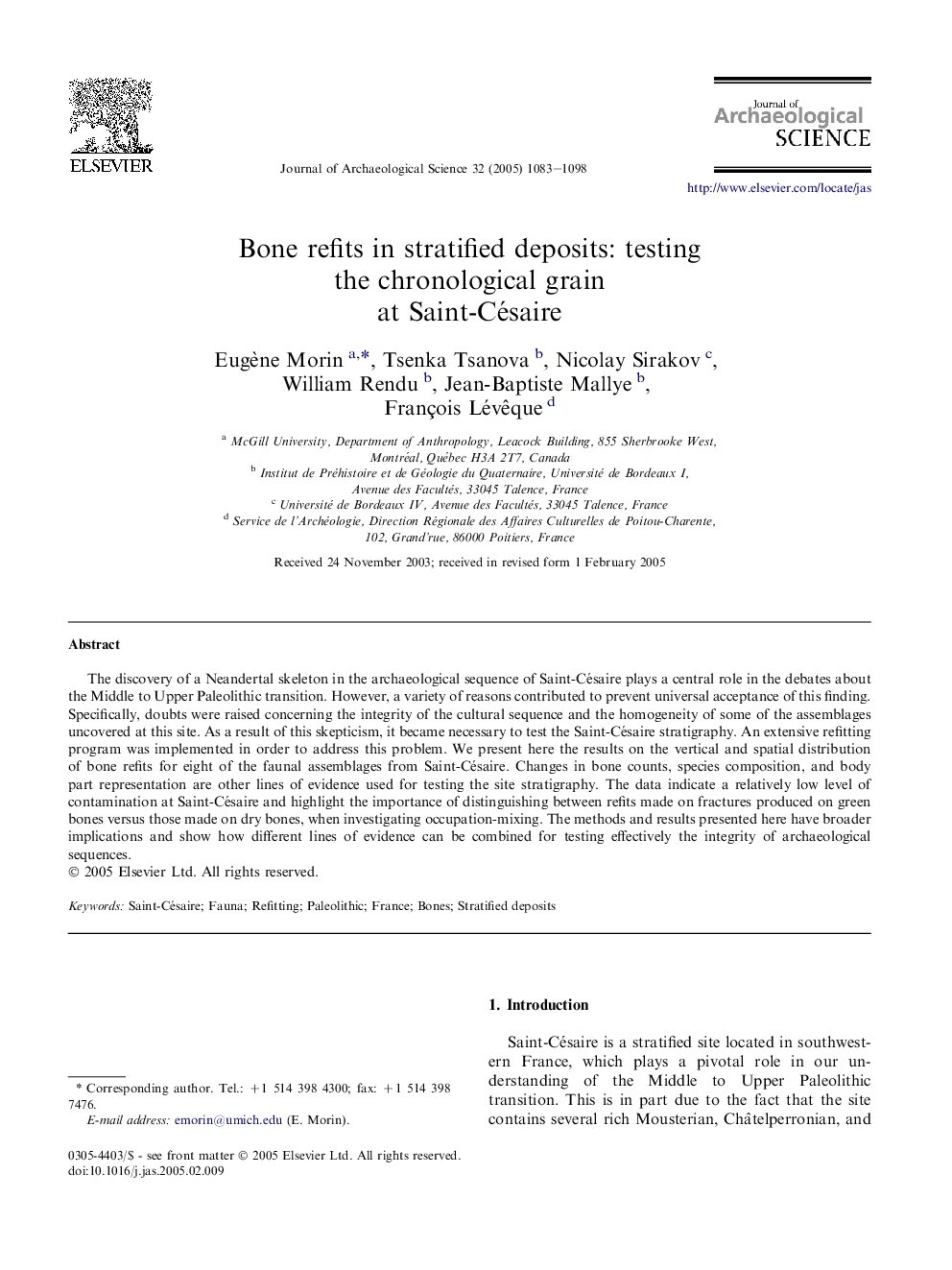| Article ID | Journal | Published Year | Pages | File Type |
|---|---|---|---|---|
| 10499447 | Journal of Archaeological Science | 2005 | 16 Pages |
Abstract
The discovery of a Neandertal skeleton in the archaeological sequence of Saint-Césaire plays a central role in the debates about the Middle to Upper Paleolithic transition. However, a variety of reasons contributed to prevent universal acceptance of this finding. Specifically, doubts were raised concerning the integrity of the cultural sequence and the homogeneity of some of the assemblages uncovered at this site. As a result of this skepticism, it became necessary to test the Saint-Césaire stratigraphy. An extensive refitting program was implemented in order to address this problem. We present here the results on the vertical and spatial distribution of bone refits for eight of the faunal assemblages from Saint-Césaire. Changes in bone counts, species composition, and body part representation are other lines of evidence used for testing the site stratigraphy. The data indicate a relatively low level of contamination at Saint-Césaire and highlight the importance of distinguishing between refits made on fractures produced on green bones versus those made on dry bones, when investigating occupation-mixing. The methods and results presented here have broader implications and show how different lines of evidence can be combined for testing effectively the integrity of archaeological sequences.
Keywords
Related Topics
Physical Sciences and Engineering
Materials Science
Materials Science (General)
Authors
Eugène Morin, Tsenka Tsanova, Nicolay Sirakov, William Rendu, Jean-Baptiste Mallye, François Lévêque,
